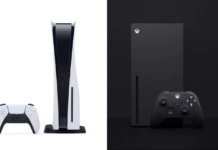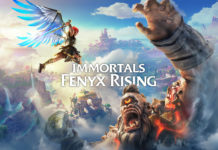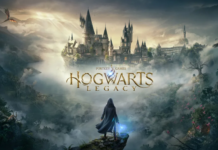The video game market is a bit unusual when you really consider it. A small core of consumers has the loudest voice, the same people who would read a column like this, while a gigantic market of casual players ensures that industry profits continue to grow each year. The core group demands original efforts and fresh takes on beloved franchises while the mass of casual consumers prefers the known, sequels to games they already own with familiar concepts. Because of this publishers are faced with a difficult decision about which way to go with a new project. Should they push the boundaries and garner critical praise from the core gamer, or is it better to churn out another sequel to a workhorse series that has held the company up for years? Every entertainment industry relies on a mix of new and old to survive, maintaining that healthy balance is the key to growth. In recent years gamers have been concerned about “sequelitis” afflicting our hobby, but a new wave has come that may change the way publishers view the topic entirely.
The economics of sequels are simple. Companies want to make as much money as possible and the safest way to do that is to emulate earlier successes. Sequels are much more likely to sell then unknown titles regardless of quality. Franchise power has carried our industry ever since the NES when Mario was the king then. Sonic continued that tradition with the Genesis, GTA led the PS2 to the highest sales tally of any console ever, and Halo 3 recently broke every single-day sales record imaginable due in large part to name recognition. As much as many hardcore gamers would hate to admit it our past time needs sequels to survive, even bad ones. While new IPs might stir our imagination we are the minority, the fact is the mainstream consumer prefers the comfort of knowing exactly what they’re getting over the nebulous potential of ambitious new projects. Publishers can’t seem to get everything but instead have a tough choice, make a new game that will probably get higher reviews and be received well by the core gamer, or make a sequel that may be panned by critics but is more likely to keep the company in the black.
This situation has caused decision makers in almost every development house to favor sequels for obvious reasons. Developers that rarely release follow-ups, such as Treasure, are the exception not the rule. Because of that it has been difficult for new concepts to get the funding over established series. Many franchises were run into the ground in the 16 and 32-bit eras, but the cream of the crop remained fairly stable. It wasn’t until just a few years ago that even legendary names such as Mario, Sonic and Final Fantasy began to show signs of weariness. This was a serious cause for concern, that kind of selling power is difficult if not impossible to replace. With development costs skyrocketing publishers could not afford to lose the sure thing because the stakes were higher then ever.
Luckily the either-or situation with sequels and new IPs seems to be changing at the perfect time. Mass Effect, Gears of War, and Assassin’s Creed have all proven that new ideas can flourish in the current gaming landscape. The fact that these fresh experiences can easily be parlayed into at least two or three money-making sequels means more developers will probably try their hand at original concepts in the near future. Other franchises, such as Call of Duty 4 and Super Mario Galaxy, have also been rewarded for making significant changes to the formulas that made them successful. This suggests that the market may have finally begun rewarding fresh efforts instead of forcing developers to choose between originality or profit.
This is good for everyone in the industry at all levels. The players obviously benefits the most, we get to explore new worlds and try new challenges and it’s certain that at least a few of these IPs will join the likes of Zelda and Metal Gear and become consistent blockbusters we can count on. Developers get to spread their wings and break the tedium a bit, this probably means they’re enjoying themselves which makes it more likely the finished product will have gotten the attention to detail a great game requires. Finally, publishers are getting high sales totals and new brands to rely on so they’re happy as well.
But we shouldn’t expect this boom in sales to change much, the business model for our medium was set long ago and this is simply a transition period. The stalwart names that have kept the industry moving for the last two decades have shown weakness, because of this publishers are seeking to find successors. When those heirs are found things will return to the way they were, except now games like Drake’s Fortune and Rock Band may be the big names holding fresh ideas down. That isn’t necessarily a bad thing when you understand how necessary AAA series are, an industry without sure-fire successes is one that won’t be around for very long. We just can’t get caught up in this optimism and expect the wave of new IPs to continue indefinitely, companies are funding these projects with purpose and an eye towards the future.
Even with that being said it’s difficult to be too cynical with the current situation. The creative forces of many top development houses seem to be reinvigorated just as they’ve been given better tools then ever. Games like Final Fantasy XIII and Super Smash Bros. Brawl seem to be prime candidates to continue the trend of old names sporting welcome improvements while it’s likely that publishers will continue to pursue new franchises now that they seem to have the Midas touch. The ability to sell immediately and grow from there is just too good to pass up and will create enthusiasm in the hearts of even the most pragmatic bean counter. In the next few years we will be able to choose the next flagship series’ that will carry our industry into the future, judging by the current candidates it seems we’ll be in good hands.
Welcome!Log into your account










